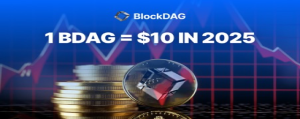European leverage restrictions: How did it affect volumes so far? – We investigate
Three days have passed since the new rulings, including very severe leverage restrictions, have been implemented by ESMA, affecting all European FX brokerages. We look at the impact in great detail.

The beginning of this month signaled yet another milestone in the ever changing structure of the retail electronic trading business, this time in the form of the implementation of the European Securities and Markets Authority (ESMA)’s rulings on the way in which certain leveraged financial instruments can be offered by brokers and traded by retail customers.
The pan-European directive, which mandates that, effective August 1, 2018, a restriction on the marketing, distribution or sale of CFDs to retail investors has been introduced. This restriction consists of leverage limits on opening positions, a margin close out rule on a per account basis, a negative balance protection on a per account basis; preventing the use of incentives by a CFD provider; and a firm specific risk warning delivered in a standardized way.
In particular, the leverage limits on the opening of a CFD position by a retail client vary from 30:1 to 2:1, according to the volatility of the underlying:
· 30:1 for major currency pairs;
· 20:1 for non-major currency pairs, gold and major indices;
· 10:1 for commodities other than gold and non-major equity indices;
· 5:1 for individual equities and other reference values;
· 2:1 for cryptocurrencies;
The margin close out rule now applies on a per account basis. This will standardise the percentage of margin (at 50% of minimum required margin) at which providers are required to close out one or more retail client’s open CFDs.
During the advent of the implementation of these rulings, FinanceFeeds has become aware of a considerable amount of contemplation by retail brokerages with regard to how to navigate this and maintain the viability of their businesses, with strategies that range from moving all of the customer acquisition priority away from Europe by disabling advertising on networks that are served to European IP addresses and instead directing them toward a non-European audience, to increasing the onboarding of customers to offshore entities.
Both of these measures are somewhat drastic, however three days have now passed since the rulings became effective, so how have volumes, especially on the EURUSD pair, been affected?
FinanceFeeds has spoken to retail brokerages, platform integration and market connectivity companies, and a selection of prime of prime brokerages, and the unanimous verdict is that absolutely no effect on volumes has taken place whatsoever.
In London yesterday, we were shown a report from an order management system provided by a non-bank market maker with several European brokerages on its books, which clearly demonstrated that August 2 (until 4.00pm UK time) was a day of very high volume, and August 1 was a day of average volumes.
There had been no tailing off at all of trading activity among brokerages based in Europe.
When taking a pragmatic look at this, it is easy to see why that is the case.
Whilst traders of retail FX are present in relatively even distribution in all continents of the earth, the actual industry itself has centered itself in just a few regions, those being: Cyprus, United Kingdom, Australia, North America, Hong Kong, Singapore and Japan.
Each region has become a specific home to specific sectors of the industry and is very much compartmentalized, even if the services offered to end users are similar.
In light of current nervousness surrounding the future of the Western retail FX markets in the immediate period following rulings that were recently set in force, here in London over the past two months, we have seen some very discontent expressions on faces, and a feeling of uncertainty has permeated across small to medium sized market participants, many technology providers whose solutions are provided to them on a volume capitalization basis, and even among major mainstream research and news entities on the basis of concern over potential market contraction and shrinking revenues due to less leverage, and advertising bans by Google and Facebook relating to certain product ranges.
It is time to take stock and take a step back, and look at how this type of activity has been present by regulatory authorities in various other regions of the world in which retail FX is a massive proportion of the financial markets activity, and particularly, where it has taken place in regions where proprietary platforms are preferred, traders are using their own self-directed techniques, are not using EAs, and are loyal to vast, long established retail FX giants.
Despite its complete cultural opposites, Japan actually checks all of those boxes and therefore can be used as a yardstick. Japan’s FX industry is completely centered on the domestic market, yet it accounts for between 35% and 40% of all retail FX volume in the entire world.
In Japan, all OTC (over the counter FX which is traded without an exchange) is conducted by Japanese companies, and the client base of the companies is completely domestic.
Many firms, large and small, have attempted to enter the Japanese market, either by basing themselves in one of the regions listed above and attempting to partner with introducers or local firms, or by attempting to establish direct business in Japan, and not one of them has been successful in any form of long term business.
The dominant firms in Japan are: DMM Securities, GMO Click Securities, MONEX Group and Invast. These companies, between themselves, are responsible for one third of all global retail FX order flow in the OTC FX markets.
Despite lack of international competition in Japan, business is booming for domestic retail FX firms, and no evidence of Japanese traders looking to trade with overseas firm has come about.
Rather topically at the moment, it is worth looking back to early 2013 when the Japanese FSA implemented leverage restrictions on all Japanese market participants, spurring speculation that the Japanese traders doing such massive volume would seek overseas firms and that the rulings would damage the vast domination of domestic firms – but no such shift occurred and it was business as usual. This can be used as a yardstick to gauge current rulings.
Between January and March 2016, 15,413,316 trillion yen was traded on an OTC basis among Japan’s companies, a 50.2% increase over the previous quarter and a record until that point.
So strong is Japan’s domestic market that its own companies have pulled out of other markets. MONEX Group sold its US and Australian client bases of its subsidiary IBFX two years ago, and discontinued the use of the MetaTrader 4 platform completely on all markets, focusing on its proprietary Tradestation.
All this did was increase the amount of margin that traders had to place, which strengthened the assets under management within brokerages.
Thus, Europe is a well organized, highly regulated environment and home to an established population which is largely used to rules and regulations at a similar level to the demographics of Japan.
The major difference, which should be taken into consideration by retail brokerages when navigating the new rules, is that rather unlike Japan, Europe’s brokerages do not seek to serve only domestic client bases. Quite the opposite is the case. Out of the 158 brokerages based in Cyprus, not only do practically none of them serve any clients in Cyprus itself (the island has a population of only 800,000) but they also hardly serve any clients in Europe.
Thus, the structure differs tremendously from the Japanese model to the extent that not only are hardly any clients of Cyprus-based brokerages actually in Europe, but the main operational headquarters of many of the Cyprus based brokerages are also outside Europe, as are the registered offices from which they largely onboard clients. The Cyprus based divisions are usually in existence to have European regulatory status and contain the relevant officers that are required for that.
Hence, it is very likely that the continuation of similar volumes to those traded prior to the restrictions are a result of brokerages with European licenses providing service to non-European clients (mostly in South East Asia, Russia and the Middle East in the case of Cyprus-based brokerages) and are onboarding them via offshore sister companies to avoid the leverage restrictions.
One particular British FX dealing desk within a major bank confirmed yesterday to FinanceFeeds that EURUSD volume traded by firms with European licenses can certainly be multi-jurisdictional volume, and originate from traders outside Europe operating MetaTrader 4 accounts that are being handled by offshore sister companies. We are aware of several companies with CySec licenses that have been doing this for many years.
One brokerage that FinanceFeeds spoke to which conducts the vast majority of its business within the European Union did experience a lowering of volume, however.
“In the immediate term, volume is lower. Having said that, EURUSD and other majors have been stuck in tight ranges for a while which is not great for volume anyway. It iwll be interesting to see what a year on year review from August to next August will look like, and I assume my view is similar to others” he said.
Another firm agreed with our analysis on Japan, and related this to firms strictly working with European clients. “The interesting thing is that Japan saw a reduction in volume after the first two months after their leverage was cut, but then it bounced right back up again so we are hoping that the same will happen in the West, and of course will let you know when I have some more feedback.”
FinanceFeeds maintains that the majority of interest toward retail markets is from Western firms approaching South East Asia and the Middle East, as Europe has very few traders and the ones that it does have are generally those with a very negative attitude toward risk or place very little emphasis on self-directed investment (it is the old world with socialist government provided pensions and welfare systems, not the new young world with hungry and entrepreneurial populations) and the red tape is far too difficult to break.
Thus, retail volume will continue for the foreseeable future to be from South East Asia, an area where volumes have been very high for several years and has a vast and highly well developed network of marketers and introducing brokers specific to the FX industry often with very large operations and where European, British or Australia, firms are the direction of choice for these traders, and the institutional sector will remain firmly planted in London.
Indeed, FinanceFeeds is aware that even more London-centric tendency is taking place in the advent of the UK’s imminent exit from the European Union.
The new markets for European firms, and indeed Western firms in general have recently begun to be centered around Thailand, Vietnam, rather unbelievably Cambodia, and for professional traders and hedge funds, Singapore.
Thailand has a population of approximately 60 million, and Vietnam approximately 100 million, and indeed there are a tremendous amount of opportunities in those regions due to IBs with large client bases constantly looking to do high volume business with Western firms. One large broker we spoke to in Cyprus told us that since establishment six years ago, the company has done nothing else apart from onboard IBs in those regions and has a vast database of clients there. The executive at the firm told FinanceFeeds that what Europe does is irrelevant.
Malaysia may well only have 30 million inhabitants, but the nation has become an ‘aircraft carrier’ for the Chinese IB networks, many of which have established in Malaysia (Malaysia is 29% Chinese speaking) and are approaching their Chinese clients from outside the long arms of the communist government and the restrictive internet firewall. This is a dynamic that will continue, as a result of China’s dim view on retail FX customers being sent in their droves to non-Chinese brokers.
FinanceFeeds has also become aware of a large influx of interest from brokerages wishing to establish operations in South Africa.
This makes perfect sense, as South Africa’s structure is based on British law, it is an English speaking nation with Western attributes, and emulates Australia in terms of its cultural background. It is heavily regulated, but there are no leverage restrictions and there is no reason why it cannot attract similarly high quality retail brokers to those established in Australia, with similar outcomes and far less cost.
A compliance consultant, who is a Chartered Accountant that FinanceFeeds spoke to in Johannesburg last week explained “I am sure if I did a bit of work I could sell regulated entities to Cysec regulated brokers and make a small fortune”.
There is also a burgeoning client base in South Africa, which is well worth exploring.
What about the large London firms?
Speaking to several executives within large well established companies in London this week, the reception has echoed this line of thinking. Indeed, it has been proffered to FinanceFeeds that the emphasis for British clients will remain on the large, good quality firms, often those with proprietary platforms especially where traders in the United Kingdom are concerned (over 70% of IG Group and CMC Markets clients are UK based, for example), and the traders will up their deposit amounts, creating stability in terms of assets under management, and less exposure.
Most good quality long term traders understand this well, just as the Japanese traders did when leverage restrictions came into force, and will remain with the firms that adhere to the rulings and continue to provide good quality multi-asset trading environments and a proper product range.
This is most likely to continue, despite the concern over products that are similar to CFDs voiced by the FCA which FinanceFeeds reported this week.
The British client bases of long standing British firms are more likely to react in the way Japan’s did as they are a loyal domestic audience, very analytical traders and value the service provided by large domestic often publicly listed British companies with proprietary trading environments (mainly Hargreaves Lansdown, IG Group, CMC Markets and Saxo Capital Markets via its London office). Quite simply Britain’s clients will likely stump up more margin, welcome the leverage rulings and carry on as normal. It is a totally different commercial and customer structure in Britain to Cyprus.
Japan’s ‘big three’, those being DMM Securities, GMO Click and Monex Group began experiencing record trading volumes of over $1 trillion per month for a sustained period of time immediately after the leverage restrictions took place, demonstrating that more capital was being placed in accounts to trade to those volumes than would have otherwise been needed with larger leverage.
This may well happen to the larger, well established Western firms very soon, and those prepared to do it properly, go the hard yards and set out the future for the entire multi-asset trading industry will be the ones who garner the long term interest of the more analytical and serious client base.
With IG Group’s imminent re-entry to the US market, that should signify a sign of the times, and a sign of the times upon which to accept with resolve and look to a good quality, less unpredictable future.
Business as usual, but with a slight twist. Isn’t that the advantage of a fully electronic, global and borderless business?









